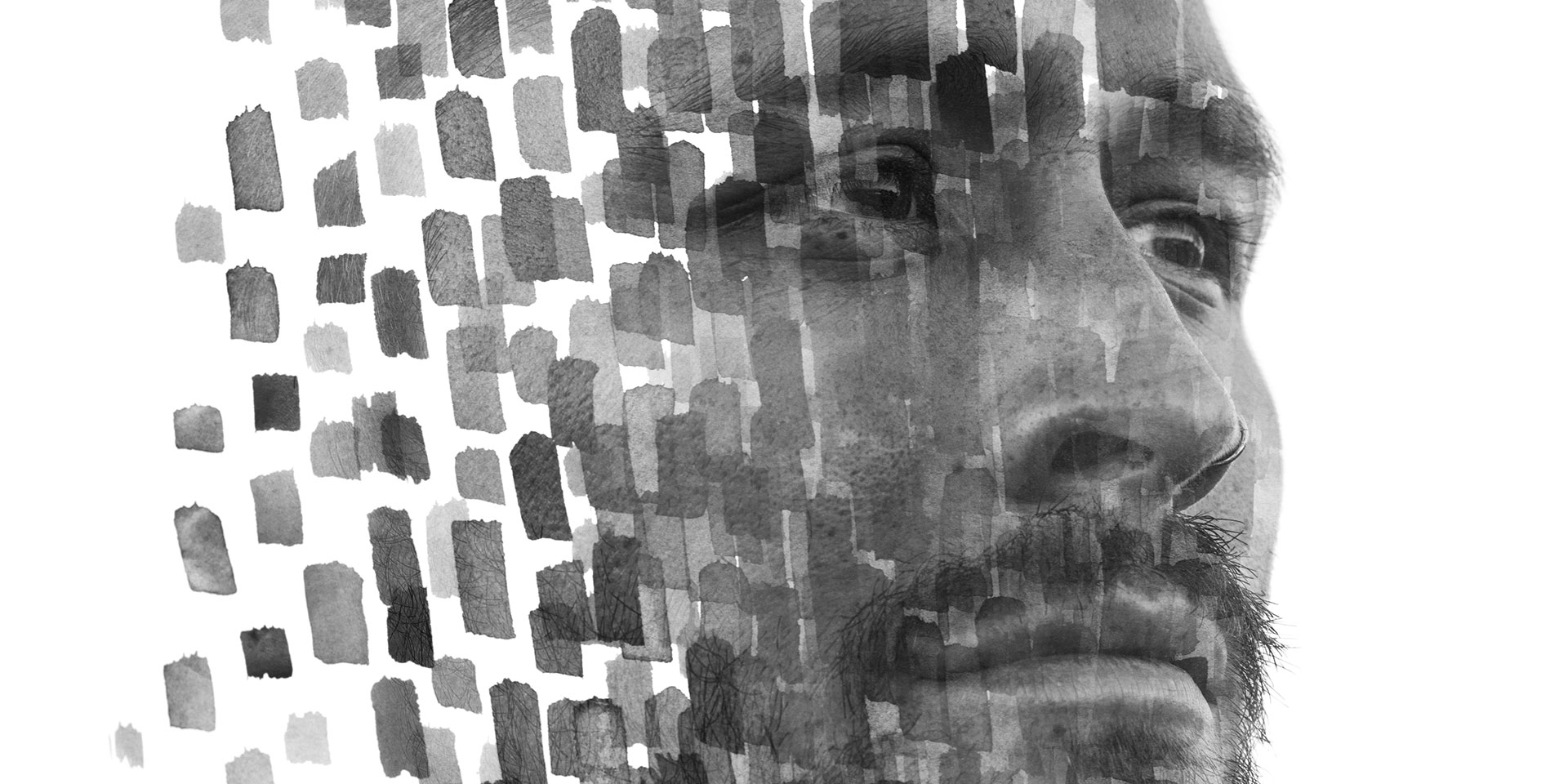Amy Ainsworth is the mother of 5-year-old twin girls, whose appearance is both surprising and fascinating – how could it be any other way when you see a pair of big green eyes showing off from behind the brown curls of one of the girls, contrasting strikingly with the coffee-coloured eyes and black, straight hair of her twin sister?
When she is not busy being a mom, Amy is working as a photographer, writing, or presenting public lectures. The subject of these presentations, however, is not connected to the secrets of photography or to the art of writing. Amy talks about what the life of a person suffering from epilepsy, depression and obsessive compulsive disorder is like—what it is like to live her life1.
“There are many forms of epilepsy. Mine is prefrontal or temporal and uncontrollable. This means that there are a lot of things I cannot do (like driving), and the fits are incontrollable.” (Amy Ainsworth)
Amy rises above her frustrations. She doesn’t keep a record of people who are unable or unwilling treat her well. She talks freely about herself and feels it is worth it to make more visible the life of people suffering from one or more neurological and psychological disorders, through her own story.
With this purpose in mind Amy describes with great lucidity both her needs and those of those who, like her, are confronted with various mental disorders. She also relates the inappropriate reactions or attitudes from people with whom she came in contact during the different stages of her life. There are four main categories of responses which a person suffering from a mental disorder is faced with, says Amy: 1) the attitude change; 2) identity defined by disability; 3) fixation on healing, and 4) insult.
The attitude change
The attitude changes of people who come into contact with a disabled person can be divided into four patterns, says Amy. Some people become overly pleasant when they realise they are in the company of a disabled person. This type of reaction conveys that the person with the disability is not regarded as a normal person. Others consider the disabled person less intelligent than them and start talking down to them. A third change of attitude is when people make unnatural efforts to include those with disabilities, either out of pity, or out of a sense of moral responsibility. At the opposite end of the spectrum, some people exclude disabled people because they think they are incapable of participating in certain activities, without even thinking or asking if they want to be involved. Such situations reinforce the disabled person’s limited view on life and rob them of the possibility of choice and self-determination.
Identity defined by disability
Disabled people long to be fully recognised in their uniquely complex identity, instead of being regarded exclusively through the lens of their disability. They hope people will notice their character traits, talents, abilities, willpower, tastes, passions and ambitions. Disability is just a part of their lives and they don’t want that to receive disproportionate attention.
“My challenge is to look at what I can do, not to live by limitation. It is true, I might not be able to drive a car, but that does not stop me from getting where I need to go. No, I cannot do things spontaneously, but I have learned to plan in detail for cases in which something might change, either for good or for worse. No, I cannot work in a normal office space, but that does not mean I do not work. No, I cannot get a college degree, but I can and am still learning. I have learned to find ways to go around problems. I have learned to adapt. And yes, I believe in God, just like you do!”2
Fixation on healing
Amy pleads against the third type of response, a fixation on “healing” which absorbs all energy and turns into an obsession. “We are all imperfect”3, she says, not giving up in the face of illness, but accepting it and a living a fulfilled life in spite of it. The obsessive fight to become “normal” is just an additional burden for a disabled person. Life can be lived fully and happily even if chronic suffering is part of it. This is a worthwhile belief when faced with a disability.
It is not the elimination at all costs of the illness which is the goal, but accepting the reality, including the necessary treatment, and improving the quality of life.
From this perspective, those who believe empathy manifests best by perpetually seeking a solution, although well-meaning, prove in the end superficial. When you continually talk to someone about healing and recovery, you are actually continually saying they are broken. Amy does not see herself as broken. There is room for authentic care from those around her, she adds—care which does not focus on the abnormal situation of the disabled person and on a search for solutions. A person with neurological or mental disorders needs normal interpersonal relationships.
Insult
Of all the responses, insult is the hardest to manage. A person with special needs must learn early on to cope with intentional offence and harassment. This is in addition to the frequent accidental or unintentional slights. This is why Amy advises those eager to avoid indirect or accidental offences not to ask simplistic questions a person suffering from depression has probably heard a thousand times before: Have you seen a psychiatrist? Have you tried treatment X? Is there hidden sin, lack of faith, will, or discipline?
Churches are not immune from the widespread scourge of mental illness. The danger of harmful approaches can only be diminished through planning and strategic actions targeting not only people suffering from mental illness, but also their friends, family, and the entire community of believers. Such an integrated approach must follow certain essential principles.
Depression, the soul’s killer
Nearly 50% of adults suffer from a mental illness at some point in their life. More than half of these experience moderate to severe symptoms. In fact, mental illness accounts for 4 out of the 10 primary causes of disability among people over the age of five, depression being the most prevalent4.
Globally, approximately 300 million people are affected by depression. Women are more affected than men.
Bipolar disorder affects almost 60 million people. Schizophrenia is a severe mental disorder, affecting approximately 23 million people around the world, while around 50 million people suffer from dementia5.
A positive community…
Research has shown that strong social support can significantly improve recovery in the case of mental illnesses6. And the church—where the model of Christ’s body is understood and lived out, in which all believers are the members of one body (Romans 12:5)—can and must become an authentic and effective source of support for people suffering from mental disorders.
…informed and educated…
A church must first inform and educate its congregation to understand the nature and complexity of mental illness, but also to eliminate urban myths concerning this condition. In the context of strategic planning, the church can invite specialists to acquaint believers with protective factors against mental illness: stress and adversity management; resilience; individual autonomy development; continuous cognitive stimulation; the role of physical exercise; developing feelings of security; self control; wise parenting, positive parent-child interaction and secure attachment; problem-solving skills; pro-social behaviour; cultivating self-respect; acquiring social and conflict management skills; socio-emotional development; and efficient forms of social support from family and friends for people with mental disorders7.
…is a source of encouragement and counselling…
The deep encouragement and wise words of many members of her church have been the fuel Amy used to support her bold journey to this day. The time the church pastors spent with her was for Amy a resource she was able to convert into trust, and their spiritual counselling, as well as the wisdom with which they recommended specialists, have been very beneficial to her.
…acceptance and wisdom…
What was very important for Amy was the openness of those with whom she worked through her doubts and anxieties, and the availability of those who helped to answer hard questions about God and His involvement in the life of disabled people. Such opportunities, scattered along the years, have contributed to the solid spiritual experience and maturity Amy uses today to analyse her life and perspectives.
…which creates connections, involves and loves.
“At church, for youth group and other small groups, in prayer groups, nobody is excluded! For most of my adolescence and youth, I was a victim of bullying, except in the church!”2
The activities the church organises for young people (which allowed her to travel to places where she otherwise wouldn’t have been able to go), the opportunity to sing in a choir, to become part of a mime group or to be the leader of a youth group or the team responsible for public worship have helped Amy overcome her phobias, lack of confidence, self-doubts, uncertainties and fear of failure. Being an introvert by nature, Amy believes the church is what helped her to become a public speaker.
The church is not only able, but has the privilege to follow Christ’s ministry example, which was concerned with man’s holistic wellbeing.
People suffering from mental illness are not the community’s weak spot or stress factor, but brothers and sisters for whom God offers a fulfilled life. With this perspective, the church will understand that the most effective approach is to support the ability of people with mental illness to take control of their own lives with full confidence in God. The church will encourage the use of treatments which improve self-help skills, provide family education and support for effective care, as well as making certain formal support mechanisms available, whenever possible. This is the mission of Christ’s church for those suffering from mental disorders: to identify resources which would otherwise remain under-utilised, and to create relationships which would otherwise not exist.
Norel Iacob is Editor in Chief of ST Network and Semnele timpului.



















